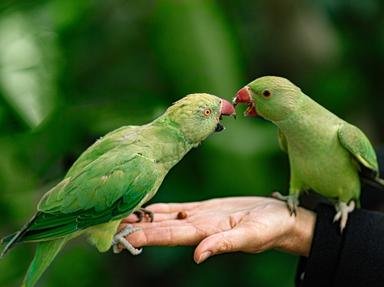Quiz Answer Key and Fun Facts
1. What is the Quaker's other common name?
2. Can you tell a male Quaker parrot from a female just by looking at them?
3. What is their Latin binomial?
4. Where is the Quaker's native range?
5. There are colonies of feral Quakers in the USA, Spain, Japan and Israel. In which of these countries would you also find a large feral colony?
6. Which of these places in the continental USA would you be most likely to see feral Quakers?
7. What makes the Quaker unique amongst parrots?
8. The Quaker is a handsome bird, and like many parrots his plumage is predominantly green, with a pale grey underside and dark blue remiges (flight feathers). What is the commonest colour variation from this scheme?
9. What is the life expectancy of a Quaker in captivity?
10. Your newly-bought juvenile Quaker has started to shake violently through his whole body! Why is this happening?
Source: Author
spaceowl
This quiz was reviewed by FunTrivia editor
gtho4 before going online.
Any errors found in FunTrivia content are routinely corrected through our feedback system.


